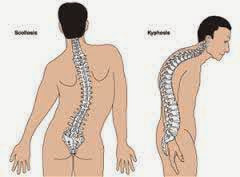Dissociative identity disorder is a condition where a person has at least two or more conditions are changing ego, which act independently of each other. According to the DSM-IV-TR, dissociative disorder diagnosis can be established when a person has at least two separate ego conditions, or capricious, different conditions in existence, feelings and actions to each other do not affect each other and raised and holding control at different times.
Clinical Development of Dissociative Identity Disorder :
Clinical Development of Dissociative Identity Disorder :
- Individuals have at least two different personalities (the difference in being, feeling, behavior), even contradictory.
- The presence of two or more separate and distinct personality of someone. Each personality has a pattern of behavior, relationships and memory respectively.
- Original personality and fractions sometimes can realize their lost time period, the presence of other personalities. The voice of the other personalities often resonates, go into their consciousness but is not known to belong to anyone.
- Gap in memory may occur if a personality is not related to other personality.
- The existence of different individuals causing disruption in a person's life and can not be cured instantly by drugs.
- It usually appears in early childhood (severe trauma in childhood), but rarely diagnosed until adolescence. More severe than other forms of dissociative disorders.
- Women more than men.





.jpg)